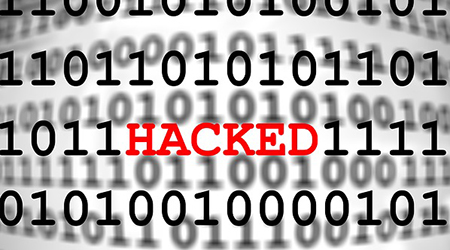Have you ever stopped to think about how much data is generated by your business each day? It’s a lot. Since you work in IT, you’re probably aware of this already since you’re the one backing it all up, but putting figures to the sheer numbers across all industries (even ballpark ones, because there are a lot of variables here) really brings it into a stark perspective. It also shines a blindingly bright light on the unavoidable importance of data backup, and of data security. But we’ll get into all that.
Let’s stop beating around the bush and take a look at just how much data businesses generate each day.
How much data do you generate?

Now, first things first let’s get the obvious out of the way. There are endless variables that will affect this question. The industry you work in, what your role entails, how large your company is – variables galore. What we’re dealing in is ballpark figures, but these are startling nonetheless when thinking about the sheer amount of word docs, databases, spreadsheets, power-points and endless work-related data your IT department needs to protect on a daily basis. While the term ‘big data’ generally refers to the mind-boggling amounts of data we all create as consumers, Googlers and social media users, business-specific data is pretty darned big too.
Database population alone is a huge figure. According to the International Data Corporation, by 2020 there will be 450 billion business transactions per day (both B2B and B2C), and while a sizable chunk of those transactions are processed by and stored within data centers by big-data giants such as Amazon, Google, and others, a vast number are still being processed by more modest companies like yours on small-scale database servers.
Emails are no slouch either – by the end of 2017, business email will account for over 132 billion emails sent and received per day. Again, even taking out hosted business email like Office 365, that still leaves a very large number hitting the Exchange Servers of businesses like yours every single day.
What’s more, data is growing – exponentially. According to IBM, 90% of the data currently existing in the business world (2.5 quintillion bytes per day across the globe) was created in just the last 2 years, and that rate of growth shows no sign as slowing. So as you’ve no doubt already figured out, data isn’t going anywhere. And as a result neither is data backup.
But what are the other implications of all this data? What stories could it tell about your business, and what damage could it do if those stories fell into nefarious hands? What if that data were lost?
Oh, and quickly before we move on from data stats, just as an interesting aside, the human brain can store a total sum of approximately 1.5 TB of data… that’s less than most high-end hard drives. Really puts the sheer amounts of data we deal with into perspective, doesn’t it?
Is all that data as secure as it needs to be?
You know all that data your users are generating? It says things. It speaks volumes both about them and about your business. And it can be exploited.
When data falls into the wrong hands, whether that’s by hacking, corporate espionage or good ol’ fashioned physical theft, there are serious implications for your business. We covered that in some depth a few months ago when we talked about the importance of encrypting backups, but it’s worth reiterating here. Now that you have a good idea of just how much data the people in your office are generating, it really hits home just how important a job securing that data really is.
According to Thales eSecurity, in 2015 only a minority of 34% of businesses reported that they use encryption ‘extensively’ to secure their data. While this is a shockingly low percentage, it’s still a step in the right direction, as in 2005 a similar survey reported that only 16% of businesses were in this category. The industries with the fastest growth of encryption uptake are perhaps unsurprisingly those that have regulatory requirements such as HIPAA for the healthcare and pharmaceutical industries. But why hasn’t adoption of encryption been as commonplace in industries without that added imperative?
Well, part of the problem could be a perception among businesses that encryption is difficult or costly to implement across the entirety of a business. In the same study linked to above, Thales found that 56% of businesses rated implementing encryption as 7 or higher on a pain-scale of 10.
While it’s true that rolling out comprehensive encryption standards across the entirety of a business’s IT environment is no small task, it’s far from insurmountable and the benefits of data security will in most instances distinctly outweigh the difficulties. Furthermore, as we’ve discussed before, one place that’s relatively easy to start and will make a big difference is encrypting company backups. A backup (and particularly an image backup) represents the entirety of your company’s data in one location. This makes it a prime target for thieves of both the conventional and digital varieties.
With BackupAssist, encrypting backups is as simple as ticking a box. Depending on your OS and the device you’re encrypting, encryption can often take some time and needs to be planned out, but the results are thoroughly worthwhile.
While the data your company generates may be valuable to third parties, it should probably go without saying that it’s even more valuable to your own organization. The more data grows in volume each year, and the more businesses grow to depend upon that data, the more important surefire server backups become.
Does your business do enough to protect and secure data?
Leave your thoughts below, tweet @BackupAssist or post to facebook.
Share this article, because data is big. Really big.

